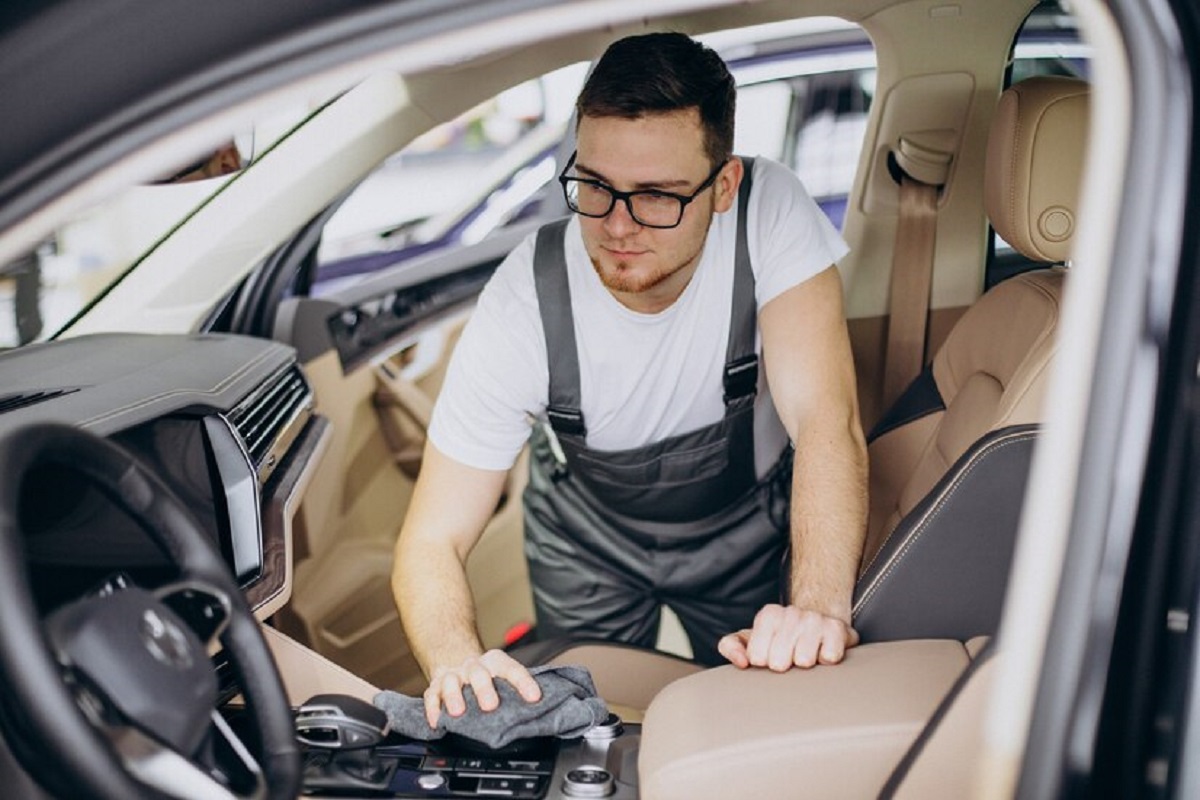Whether you’re a daily commuter, a weekend adventurer, or a parent chauffeuring kids around, your car seats can quickly accumulate dirt, stains, and odors. Keeping your car seats clean not only enhances the aesthetics of your vehicle but also contributes to a healthier driving environment. In this guide, we’ll walk you through a simple yet effective process to clean your car seats at home, using readily available household items. Say goodbye to those unsightly stains and hello to a fresh-smelling ride! This article is crafted by Ubuzzup.com.
Materials You’ll Need
Before we dive into the cleaning process, let’s gather the materials you’ll need:
- Vacuum cleaner with upholstery attachment
- Soft-bristle brush
- Microfiber cloths or sponges
- Bucket of warm water
- Mild liquid soap or upholstery cleaner
- White vinegar
- Baking soda
- Essential oil (optional, for fragrance)
Step-by-Step Guide
1. Vacuum Thoroughly
Start by using your vacuum cleaner’s upholstery attachment to remove loose dirt, crumbs, and debris from the car seats. Make sure to reach between the crevices and seams where dirt tends to accumulate.
2. Brush Away Dust
Use a soft-bristle brush to gently loosen and remove surface dust and dirt from the seats. This step helps prepare the seats for deeper cleaning. Discover right now how to clean car seats.
3. Check for Stains
Identify any visible stains on the car seats. Common stains include food spills, beverage stains, ink marks, and pet accidents. Knowing the type of stain will guide you in choosing the appropriate cleaning method.
4. Prepare Cleaning Solution
Mix a small amount of mild liquid soap or upholstery cleaner with warm water in a bucket. Avoid using harsh chemicals that could damage the fabric. For tough stains, you can add a splash of white vinegar to the solution.
5. Test in an Inconspicuous Area
Before applying the cleaning solution to the entire seat, test it in a hidden or inconspicuous area to ensure it doesn’t cause any discoloration or damage to the fabric.
6. Clean Gently
Dip a microfiber cloth or sponge into the cleaning solution and wring out the excess liquid. Gently scrub the stained areas in circular motions. Avoid oversaturating the fabric, as excessive moisture can lead to mold and mildew growth.
7. Rinse with Clean Water
After cleaning, dampen another clean cloth with plain water and wipe down the seats to remove any soap residue. This step prevents the soap from attracting more dirt in the future.
8. Deal with Odors
If your car seats have an unpleasant odor, sprinkle baking soda over them and let it sit for about 15 minutes. Baking soda helps absorb odors. Vacuum up the baking soda thoroughly.
9. Let It Dry
Allow the car seats to air dry in a well-ventilated area, away from direct sunlight and heat sources. Avoid sitting on the seats until they are completely dry.
10. Optional: Add Fragrance
For a pleasant aroma, you can add a few drops of your favorite essential oil to a cloth and gently rub it over the seats. This step adds a touch of freshness to your car interior.
Conclusion
Cleaning your car seats at home is a simple process that can make a significant difference in the overall appearance and comfort of your vehicle. In addition, installing an exhaust fan in your kitchen further enhances air quality, making it a perfect complement to the steps provided in this guide for removing stains, dirt, and odors from your car seats.Regular maintenance and timely cleaning will keep your car seats looking and smelling great for miles to come.
FAQs
Can I use any type of soap for cleaning my car seats?
While mild liquid soap or upholstery cleaner is recommended, avoid using strong detergents or chemicals that could damage the fabric.
Is it safe to use vinegar on car seats?
Yes, white vinegar is safe to use when diluted with water. It can help break down stains and odors effectively.
How often should I clean my car seats?
Aim to clean your car seats at least once every three months, or more frequently if you notice stains or odors.
Can I speed up the drying process with a hairdryer?
It’s best to let the car seats air dry naturally. Using a hairdryer or heat source can damage the fabric.
Are commercial upholstery cleaners better than homemade solutions?
Not necessarily. Homemade solutions can be just as effective without the risk of introducing harsh chemicals to your car interior.

